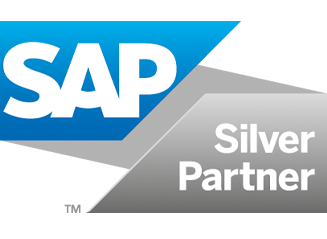Declarația informativă D406 Fișierul Standard de Control Fiscal
In 2020, Romania Tax Authority (ANAF) introduced its own audit report , named Informative Declaration D406. SAF-T system was first developed by the OECD in 2005.. It has since become a standard in Europe for the electronic exchange of accounting data between tax authorities and taxpayers. The format is based on XML (a machine-readable format), internationally standardized for electronic tax reports and VAT reporting.
IS SAF-T MANDATORY IN ROMANIA? SAF-T ESTE OBLIGATORIE ÎN ROMÂNIA?
SAF-T Romania is mandatory for large taxpayers starting from 2022. The tax authority divided large taxpayers into two cycles. . In the first cycle, there are large taxpayers which are in the 2017’s large taxpayer list published by ANAF. In the second cycle, 400 large companies were added, after updating the large taxpayer list in 2021. Additional 400 large companies join the obligation in July 2022.
For medium-sized taxpayer’s obligation will begin in 2023 and small-sized and non-resident companies will join in 2025. The deadline for the submission is the last calendar day of the following month of the relevant tax period.
SAF-T MONTHLY / QUARTERLY REPORT
The D406 statement must be submitted to the Romanian Tax Authority each month or each quarter, depending on the bookkeeping method (single/double entry). Taxpayers who are not registered for VAT purposes will submit SAF-T files quarterly.
Starting on 1 January 2022, taxpayers will have a six-month grace period. The first half of (January to June) 2022 must be reported by the end of July 2022.
SAF-T ANNUAL REPORT (D406 Asset )
Annual reporting is based on the taxpayer’s financial year. The first annual report submissions will be in 2023 and include asset information from 2022.
SAF-T ON REQUEST (D406 Stock)
A stock information report will be created on request and reported for the time and period set by ANAF at least 30 days after the official request.
WHO IS REQUIRED TO SUBMIT A SAF-T FILE IN ROMANIA?
Romanian legal entities and foreign entities without a legal presence in Romania that are obliged to keep double entry books will have to submit the standard SAF-T fiscal control file through the Informative Declaration D406.
Companies required to file the SAF-T D406 file include:
- Autonomous companies
- Joint-stock companies
- Limited partnerships
- Limited liability partnerships
- Legal entities
- Units without legal personality in Romania that belong to legal entities based abroad
- Foreign legal entities operating through a permanent establishment (or several permanent establishments) in Romania
- Foreign legal entities whose management is effectively based in Romania
- Non-resident companies that have a registration code in Romania for VAT purposes, such as taxpayers registered by direct registration, taxpayers registered by tax representatives, and fixed offices
MANDATORY FIELDS
-
Monthly and quarterly SAF-T file:
Master Files with certain subsections
- General ledger accounts (Accounting Accounts- Logbook)
- Customers
- Suppliers
- Tax table
- UOM table
- Analysis type table
- Products
General ledger entries (Accounting records-Journal register)
Source documents with the following subsections:
- Sales invoices
- Purchase invoices
- Payments
-
Annual SAF-T file (Information Declaration D406 – Assets):
Master files with certain subsections:
- General ledger accounts (Log Log)
- Analysis type table
Assets
Document Source with the following subsections:
- Asset transactions
-
On demand (Information Declaration D406 – Stocks):
Master files with certain subsections:
- General ledger accounts (Accounting Accounts – Logbook)
- Tax table
- UOM table
- Analysis type table (Analysis types table)
- Movement type table
- Products (products)
- Physical stock (stocks)
- Owners
Source Documents with the following subsections:
- Movement of goods
How can SNI SAP and portal solutions help you with D406?
SNI’s solution helps you to retrieve accounting data from client’s ERP, map and process the data, and convert it into the required XML file.
Through the SAP solution, all steps are completed in the client’s system before the files are manually uploaded to the DUK Integrator for file validation and get the report ready to submit it to the tax authority’s portal.


